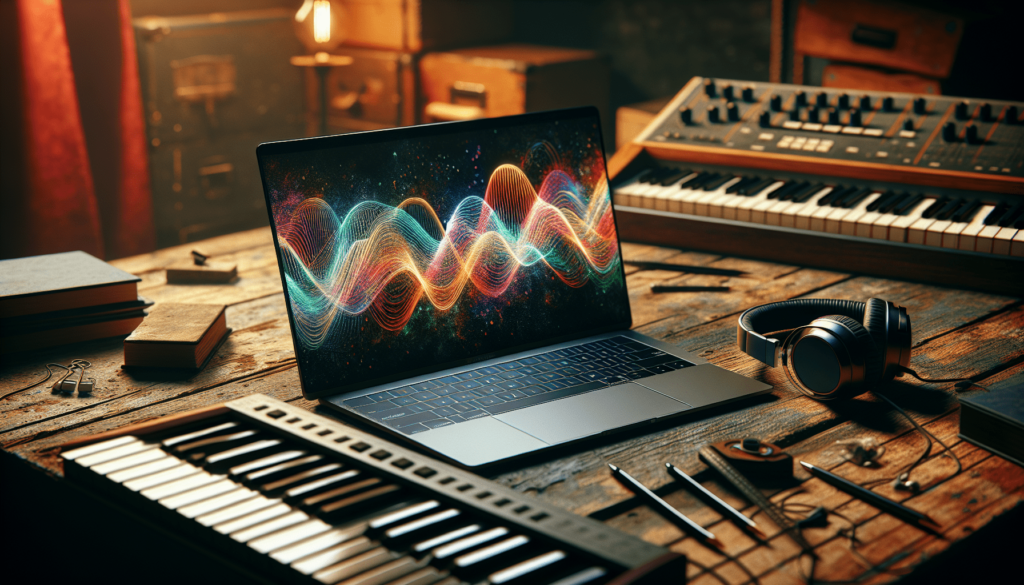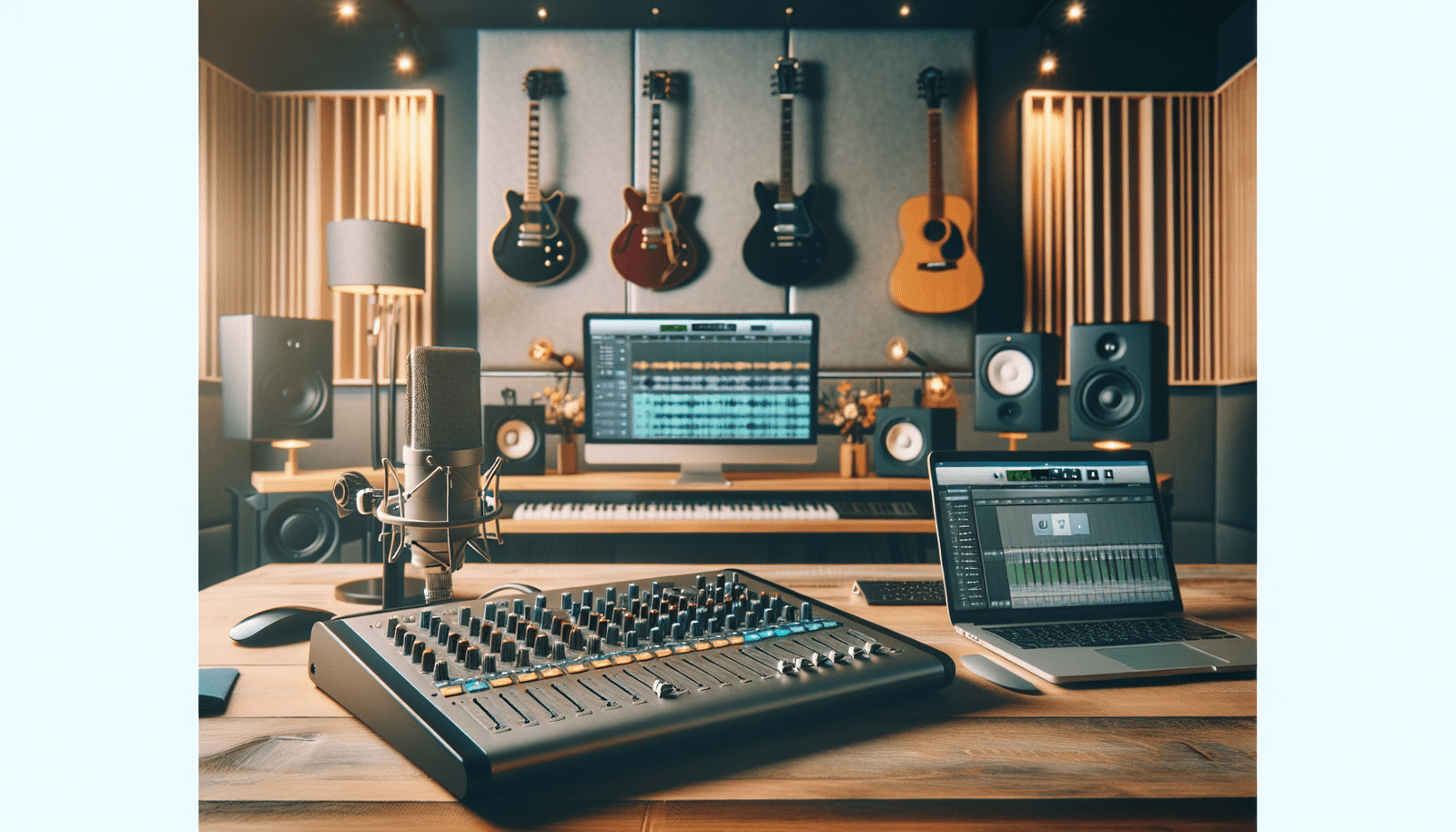Have you ever felt stuck when trying to express your musical ideas? You’re not alone! Many budding musicians look for tools that can help them unleash their creativity and bring their sound to life. GarageBand, Apple’s digital audio workstation (DAW), is one such tool that might just be what you need.
What is GarageBand?
GarageBand is a user-friendly DAW that allows both beginners and seasoned musicians to create music easily. With its spectrum of virtual instruments, loops, and recording capabilities, it has become a go-to software for those wanting to compose, mix, and edit audio tracks without the steep learning curve commonly associated with more complex DAWs.
Features of GarageBand
GarageBand is packed with features that cater to a variety of musical needs. Here’s a closer look at what you can expect:
Virtual Instruments
One of the standout features of GarageBand is its extensive library of virtual instruments. From pianos and guitars to orchestral strings and synths, the software provides you access to diverse sounds that can complement your creative vision.
Loops and Samples
GarageBand also includes a vast selection of pre-recorded loops and samples in various genres. You can easily drag and drop these into your project, which can save you time and spark inspiration when you’re feeling creatively blocked.
Recording Capabilities
Whether you’re laying down vocals or capturing live instruments, GarageBand has robust recording features that allow you to track multiple audio sources simultaneously. You can record your ideas, refine them, and effortlessly arrange your tracks until they sound just right.
User Interface: Navigating GarageBand
Getting familiar with GarageBand’s user interface can help you make the most out of its functionalities. Here’s how the main elements are arranged:
Workspace
The central workspace is where all the magic happens. Here, you’ll find a timeline that displays your audio and MIDI tracks. You can click and drag elements to arrange them, adjust the volume, and apply effects.
Track List
On the left side, the track list shows all the tracks in your project. Each track can represent different sounds, such as a vocal part, a guitar riff, or a drum loop. You can easily add, remove, or reorder tracks here according to your preferences.
Control Bar
The control bar is where you can manage playback, recording, and project settings. You’ll also find essential tools like tempo adjustment and metronome settings, making it easier to keep your project cohesive.
Setting Up GarageBand
Before you can unleash your creativity, it’s important to set up GarageBand properly. Here’s how you can get started.
Installation
First, make sure you have GarageBand installed on your Mac or iOS device. You can download it from the App Store if you haven’t. Once it’s installed, open the app to see the main dashboard.
Creating a New Project
To create a new project:
- Choose a project type—either ‘Empty Project’, ‘Piano’, or any available template that suits your needs.
- You’ll then select the type of track you want to create, whether it’s audio, software instrument, or a drummer track.
- Set the tempo and key signature as desired and hit ‘Create.’
Your new music canvas is ready!
Configuring Preferences
Understanding GarageBand’s preferences can enhance your experience. Navigate to GarageBand > Preferences to adjust audio input and output settings. Ensure your audio interface (if you have one) is selected for optimal sound quality.

Making Music with GarageBand
Now that you’re set up, it’s time to tap into your musical creativity! Here are some tips on creating your first track.
Choosing Your Sounds
Start by selecting the instruments or loops you want to use. The sound library is categorized by genre, making it easy to find what you need. Spend some time experimenting with different sounds until you find a combination that resonates with you.
Recording Your First Track
To record, follow these steps:
- Select a track where you want to record.
- Click the red record button on the control bar.
- Play or sing your part while monitoring the levels.
- Stop when you’ve finished the take.
You can always re-record sections that need fine-tuning, so don’t worry about getting it perfect the first time!
Using Loops
If you want to add some flair quickly or are unsure about playing an instrument, loops can be a lifesaver.
- Open the Loops browser by clicking on the loop icon.
- Preview loop sounds and drag your favorites into the timeline.
- Arrange the loops to suit your style, thus shaping a lush musical landscape.
Editing Your Tracks
Editing is where you can refine your initial ideas. You can split, delete, and move audio sections easily on the workspace. For precise adjustments, you can zoom in on the timeline, allowing for detailed control over the audio and MIDI data.
Applying Effects
GarageBand comes loaded with various effects to enhance your recordings. Whether it’s reverb, delay, or EQ, these effects can add depth and polish to your sound.
- Select the track you wish to apply effects to.
- Open the Smart Controls by clicking the dial icon.
- Browse through the available effects and switch them on or adjust settings as needed.
Collaborating and Sharing Your Music
Music is often about connection, and GarageBand makes collaboration straightforward.
Collaborating with Others
If you’re working with friends or fellow musicians, consider using GarageBand’s Share feature.
- After finishing a project, navigate to ‘Share’ in the menu bar.
- You can export your project as an audio file or save it to iCloud, making it easy to share with others.
Exporting Your Work
When you’re ready to release your track:
- Click on ‘Share.’
- Select ‘Export Song to Disk.’
- Choose your desired file format (AIFF, MP3, etc.) and quality settings, then export.
Now your music is ready to reach a wider audience!

Troubleshooting Common Issues
Sometimes, you may run into snags while using GarageBand. Here are some common problems and how to resolve them.
Lagging Audio
If you experience audio lag while recording, check your buffer settings:
- Go to GarageBand > Preferences > Audio/MIDI.
- Adjust the I/O Buffer Size—lower values reduce latency but require more processing power.
Missing Sounds or Loops
If you find that some sounds or loops aren’t available, consider updating GarageBand for improved content library access or ensuring that your internet connection is active, as some loops may need to be downloaded.
No Sound Output
If you’re not getting any sound, check your audio preferences:
- Ensure that the correct output device is selected in GarageBand’s preferences.
- Confirm that the volume on your device isn’t muted or too low.
Learning and Improving Your Skills
While GarageBand is relatively intuitive, there’s always more to learn. Here’s how you can continue to enhance your music-making skills.
Online Tutorials
There are numerous free and paid tutorials available online that can guide you through more advanced techniques or specific features in GarageBand. Websites like YouTube and specialized music production sites can provide valuable insights.
Practice, Practice, Practice
The best way to improve is to keep creating. Set aside regular time for music creation, no matter your skill level. Experimentation is a vital part of learning, so don’t hesitate to try new genres, instruments, or songwriting styles.
Join Music Communities
Engaging with other musicians can provide inspiration and feedback. Online forums, social media groups, or local musicians’ meetups can be great for sharing ideas, seeking advice, or collaborating on projects.
Conclusion
GarageBand is a powerful tool that equips you with everything you need to create, record, and produce your music. It encourages experimentation and makes the music production process enjoyable. Whether you’re a seasoned musician or just starting, using GarageBand can help to transform your musical ideas into reality. By understanding its features and actively engaging with the software, you can indeed unleash your creativity and take your music to the next level. So why wait? Grab your instrument or dive into looping, and start making music today!



